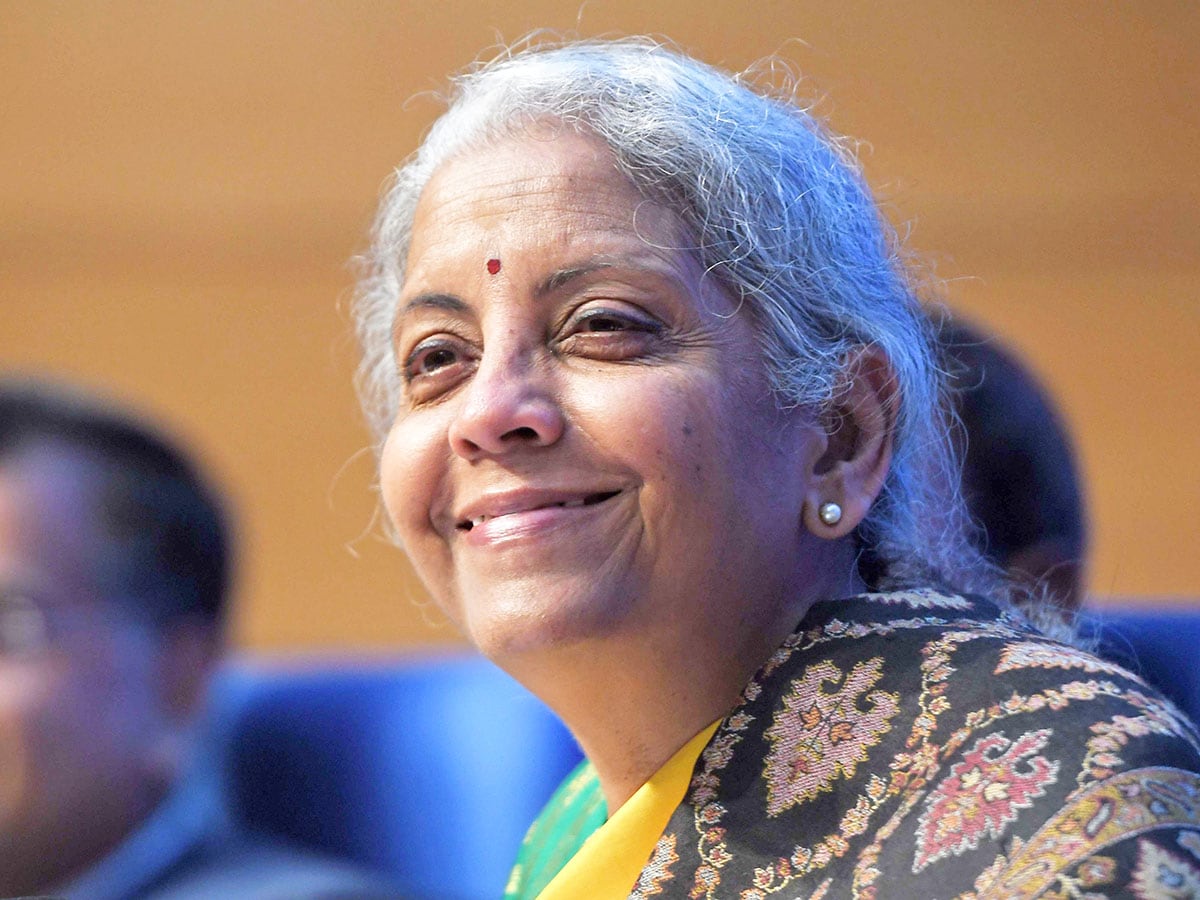
Budgeting for memes: Curious case of finance minister and Internet's comic relief
By Prof. Vineeta Dwivedi| Feb 3, 2025
Politicians often entertain the Internet, and FM Sitharaman has become an unexpected star in this digital circus, inspiring countless memes, GIFs, and viral jokes
 [CAPTION]While Nirmala Sitharaman has become a meme sensation, her predecessors largely escaped this internet scrutiny.
Image: Chandradeep Kumar/ India Today via Getty Images[/CAPTION]
[CAPTION]While Nirmala Sitharaman has become a meme sensation, her predecessors largely escaped this internet scrutiny.
Image: Chandradeep Kumar/ India Today via Getty Images[/CAPTION]
Another budget and another meme storm featuring Finance Minister Nirmala Sitharaman hit our social media feeds. Middle-class, internet-savvy India is as keen on joking about the FM as they discuss the budget over a cup of tea.
Politicians often entertain the Internet, and FM Sitharaman has become an unexpected star in this digital circus, inspiring countless memes, GIFs, and viral jokes. This burst of internet humour, at her cost, is a fascinating intersection of media theory, political perception, and social commentary. If it isn’t a meme, has it even happened?
While Nirmala Sitharaman has become a meme sensation, her predecessors largely escaped this internet scrutiny. Former finance ministers like Pranab Mukherjee, P Chidambaram, and Arun Jaitley lacked the viral spark that fuels today’s meme economy.
Pranab Mukherjee’s tenure was marked by his scholarly demeanour, earning him the reputation of a statesman rather than a meme subject. P Chidambaram’s witty yet precise economic commentary occasionally drew attention, but never in the form of meme virality. Arun Jaitley, a social media-savvy leader, maintained a strategic and measured public persona, keeping finance ministry discourse largely outside social media.
So why is Sitharaman different? The shift can be attributed to the rise of digital populism and the changing nature of public engagement with politics. Social media algorithms now amplify moments of perceived eccentricity or detachment, often reducing nuanced discussions into snippets primed for humour. Moreover, the post-2014 digital boom in India has ensured that every policy announcement faces immediate public reaction, often through memes and satire.
“When economics meets meme culture”, “When the Budget speech becomes stand-up comedy”, and “Finance is serious business—except when it’s not”—whether it’s the skyrocketing fuel prices, GST confusions or taxation policies, Sitharaman’s statements are often reduced to punchlines. Her infamous “I don’t eat onions” remark during a period of soaring onion prices was immediately meme-fied, turning a simple statement into a symbol of elite detachment from everyday hardships.
The meme-ification of finance ministers reflects the evolving landscape of political communication. As policies get more complex, public discourse gets more visual, immediate, and humorous—whether politicians like it or not.
Also read: Should we really ban social media?
The meme culture
Meme culture thrives on simplification and exaggeration—it takes a complex issue, strips it of nuance, and distils it into an easily digestible joke. This is Jean Baudrillard’s theory of hyperreality in action: where the lines between reality and its representation (like images, media, or simulations) become so blurred that the simulated version feels more real than the actual experience due to the overwhelming influence of media and technology, The meme version of Sitharaman is larger than life, sometimes more real than reality itself. Whether she intends it or not, her public persona is now shaped by these snippets of humour, consumed and shared by millions who may not even follow finance news seriously.But there’s another layer—when policies seem overwhelming, humour is a coping mechanism; humour offers relief. The best example? Post-budget reactions where citizens, unable to understand the financial jargon, simply declare, “Aam Aadmi ko phir se loota gaya” (The common man has been robbed again), with a viral meme to go along with it.
Social media algorithms prioritise engagement—posts that evoke strong emotions spread faster. A well-timed meme about Sitharaman reaches more people than an in-depth news article.
The gendered meme
Do female politicians get meme-fied differently than their male counterparts? While all politicians are subject to online satire, there’s a noticeable trend in how humour is shaped around gender.Take, for example, how memes about other public figures like Piyush Goyal or Raghuram Rajan focus on their policies or leadership styles, while Sitharaman’s often venture into household analogies, emotional framing, or indirect gender-based humour. Comments such as “Budget toh ghar ka ration samajh ke banaya hai” (She’s treating the budget like household groceries), reinforce stereotypes.
Another notable contrast is how male politicians have navigated humour. Leaders like Narendra Modi and Rahul Gandhi have also been subject to meme culture, but their image crafting allows them to control the narrative. Sitharaman, on the other hand, finds herself in a space where economic jargon meets meme-worthy moments, making her an easy target for satire.
Media framing theory suggests that media narratives shape public perception by emphasising certain aspects over others. When female leaders are repeatedly framed through a gendered lens, even humour becomes a subtle reinforcement of traditional roles. Is Sitharaman’s economic policy genuinely the reason behind the memes, or is there an added layer of social bias? Women often face unequal scrutiny, and research says that male users flag women’s posts more frequently on male-dominated topics.
If most people engage with Sitharaman through memes rather than policy discussions, her digital persona becomes that of a comic relief figure rather than a finance expert. That cannot be a good thing for her personal brand, could it?
For Nirmala Sitharaman, the Internet’s love for humour has created an alternate reality where she is not just a finance minister but more the topic of internet jokes. Is it a form of citizen empowerment or passive digital dissent? This double-edged sword brings politics to the masses in an engaging way but also risks reducing serious discussions to fleeting jokes. Ultimately, a finance minister’s legacy may be about GDP growth, not how many memes they inspire.
Prof. Vineeta Dwivedi is an associate professor of communication and negotiations at SP Jain Institute of Management and Research (SPJIMR). Views are personal.